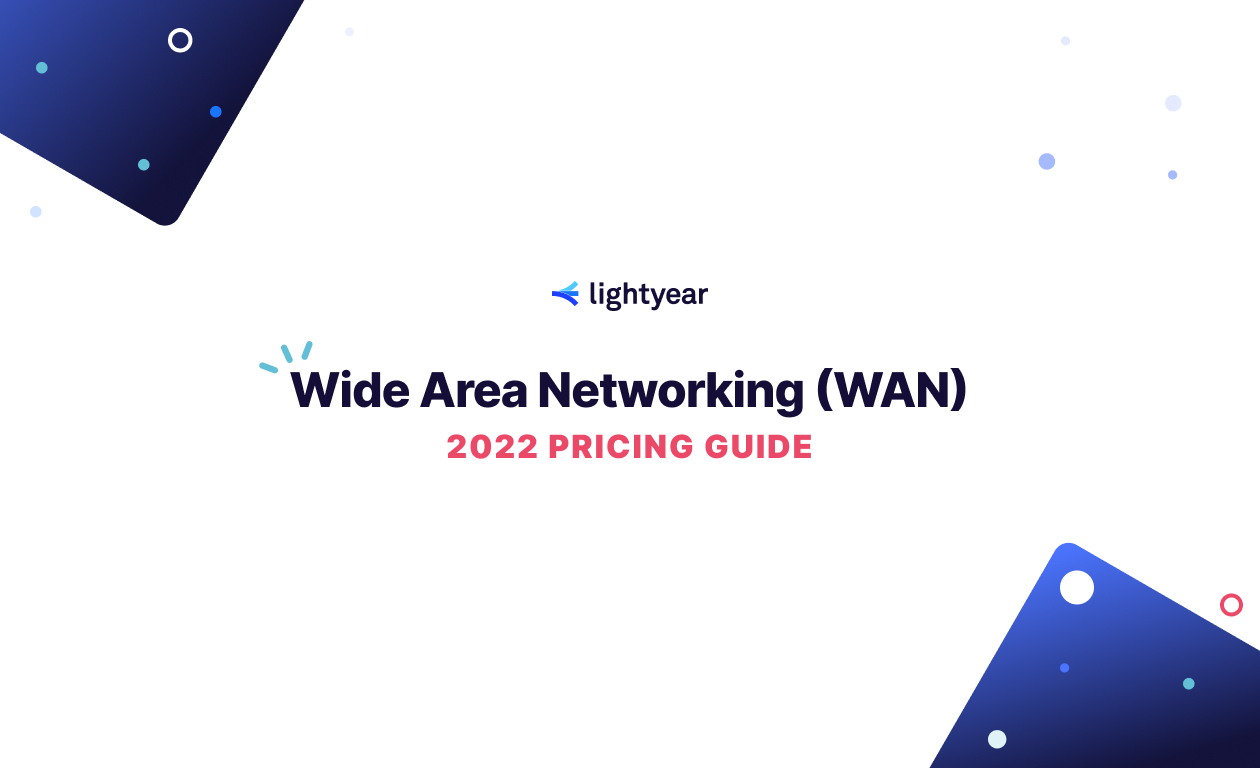The State of Multiprotocol Label Switching (MPLS)
The State of MPLS: What is Multiprotocol Label Switching (MPLS) and why are some enterprises still using it while it falls out of vogue for many others?
KEY TAKEAWAYS
What is MPLS?
Layer 2/3 WAN TechnologyMPLS Use Cases
Quality of Service, security, & convenienceDownsides of MPLS
Not cloud friendly, lack of scalability, increasing TCO
Rob Rodier
Feb 22, 2022
SHARE
Old technologies hardly ever die; they simply fade away from the spotlight.
Multiprotocol Label Switching (MPLS) has been supporting enterprise wide area networks for more than two decades, but has been fading from the spotlight in recent years as new WAN technologies have emerged.
In 2013, well known market research firm Gartner published a research document asking the question: “Is MPLS Dead?” And yet, MPLS continues to live beyond its life expectancy in 2022, and is even growing at modest rates still (according to some sources). Why is that?
This post covers the state of MPLS: what it is, why some enterprises are still using it, and why it is falling out of vogue for many others.
What is MPLS?
MPLS is a wide area networking technology that runs on dedicated, physical infrastructure and uses proprietary hardware to route data packets in a predictable, secure manner.
MPLS does this via “packet labeling”. When a data packet enters the network, it’s assigned to a specific forwarding class of service (CoS) - also known as a forwarding equivalence class (FEC) - indicated by appending a short bit sequence to the packet (aka the “label” in Multiprotocol Label Switching). These classes are indicative of the type of traffic they carry and how they should be prioritized. The main point with all this is that the labels provide a way to attach additional information to each packet above and beyond what routers provided pre-MPLS.
Here’s a more detailed description of MPLS, for those interested.
First things first: nuance
Before diving into the proverbial “pros and cons” of MPLS, I need to call out the nuance that comes with this discussion.
MPLS is an ultra high quality and secure networking option for many enterprises. For that reason, I don’t think it will ever truly “die”.
That said, the network topology of traditional MPLS networks (hub and spoke, even if technically mesh) is dying as cloud computing becomes more prevalent (more on that in the “why is MPLs falling out of vogue” section).
There are specialized use cases where MPLS still makes tons of sense:
- We have a few customers that utilize MPLS connections in a P2P network topology (e.g. connects location A and B) where they require ultra low latency and ultra high security for that specific connection.
- We also see large enterprises leverage MPLS as part of the underlay network strategy within their SD-WAN deployments.
- Finally, if you have centralized call processing in a private cloud and need to move voice packets across a WAN MPLS is exceptionally capable.
Why are some enterprises still using MPLS today?
MPLS provides a few key features that keep it entrenched in many enterprise networks today.
Convenience
MPLS is an end-to-end, carrier-managed solution, which means the telecom carrier is responsible for guaranteeing interconnectivity (and managing the associated service level agreements (SLAs) - discussed in the next section).
This means that your provider is entirely responsible for getting packets from point A to point B within the parameters defined by the SLA. This is extremely convenient compared to a network where your IT team is in charge, like a dark fiber network, for example.
The convenience factor of a fully managed service has many enterprise IT teams enticed to stay on their legacy MPLS network, even as newer technologies offer managed solutions as well - such as Managed SD-WAN.
Established Quality of Service (QoS) Thresholds
MPLS is a private dedicated network, so traffic outside of your network will not impact your network quality. In addition, carriers establish Service Level Agreements (SLAs) with customers establishing network quality thresholds; if a carrier fails to meet the objectives, customers will typically receive a service credit.
For MPLS, your network “quality” is defined by the “Quality of Service” (QoS) agreement. MPLS QoS standards are defined in terms of bandwidth, latency, jitter, and packet loss. This means that when your network is backed by a QoS agreement, you are guaranteed your bandwidth at all times, high network speed (aka low latency), and a high quality connection (aka minimal/no jitter or packet loss).
High Levels of Security
The safest way to protect your data is to limit who else may gain access to it. With the public Internet, traffic is technically open to anyone with an IP address and a network connection.
Given MPLS is a closed, private network, it is a much more secure form of network transport for your data - keeping it an attractive option for some enterprise networks.
I did some research and couldn’t find any examples of data breaches on an MPLS network backbone - if anyone disagrees, please let us know.
Why is MPLS Falling Out of Vogue?
MPLS, like any technology, has its limitations. In this case, the limitations have been driving a slow migration away from the technology.
MPLS is not Cloud Friendly
Hub & Spoke Ain’t Woke
MPLS was designed for traditional network connections with access and termination points in a centralized, enterprise data center (either on-premise or a colocation data center) - otherwise known as a “hub and spoke” network topology.
In these traditional networks, every single one of your applications would live on a server in a centralized data center. Every message or email you send would have to travel through or “backhaul” through the data center. Additionally, the “spokes” of the network (e.g. the branch offices) would travel on the MPLS connection to the data center in order to access the public Internet.
While MPLS networks can be “meshed” hub and spoke networks (where you can move data from branch to branch without backhauling through the data center), these still do not lend themselves to public cloud / SaaS applications as there is still no direct path to the public Internet.
Cloud has an antithetical design to this. With cloud computing, the data center moves from the customer premises to the vendor’s cloud presence. As more and more applications move to the cloud, the traditional MPLS topology no longer makes sense.
Hence, hub and spoke ain’t woke.
The thing about SaaS
MPLS was designed for traditional enterprise network connections before cloud computing and the world of SaaS became popular.
If you want to access cloud applications with your MPLS network, you’ll need to procure additional Internet access or private line(s) of connectivity from your network to the cloud point of presence (PoP). This additional line of connectivity will introduce additional cost and complexity when used with cloud applications.
This issue is paramount for MPLS networks that also utilize cloud based telephony solutions (which have become increasingly popular in the work-from-home era). Cloud based telephony is especially sensitive to latency and jitter, meaning that the lack of direct cloud connectivity in your MPLS network can be costly in more ways than one: the cost of the additional connectivity + the cost of the productivity losses caused by increased network latency.
As you’ve probably noticed… corporations are moving to the cloud in big numbers. In 2022, global cloud revenue is estimated to total $474 billion, up from $408 billion in 2021. As cloud utilization and cloud based phone solutions continue to boom, MPLS will likely become a less and less prevalent networking solution.
A Lack of Scalability
With MPLS, a single carrier provides the network which has its benefits but comes with one huge limitation - a lack of scalability.
This means that anytime you want to add an additional network node to your MPLS WAN, you are required to utilize the same provider that you use at your existing locations. This can be extremely costly and time consuming, depending on if your provider already has fiber at the new node or not.
If you want to expand your MPLS network beyond the reach of your telecom provider’s backbone, you’ll either need to pay for your telecom provider to build to your new location, or you’ll have to pay for Tier 2 circuits (your provider reselling the on-net provider’s connectivity).
This can sometimes be cost prohibitive for enterprises, and is the most common trigger we see for enterprises to switch from MPLS to SD-WAN. If you're intrigued by the benefits of SD-WAN but currently feel "stuck" on your MPLS network infrastructure, check out this guide to Transitioning from MPLS to SD-WAN!
High Cost, Low Bandwidth
Since the birth of MPLS, bandwidth utilization has exploded. When MPLS was first born, 100 Mbps was viewed as high bandwidth connectivity.
As bandwidth utilization has increased, additional service types and technologies have emerged that are able to provide similar benefits to that of MPLS at a lower cost. As evidenced in this WAN Connectivity Pricing Guide, MPLS tends to be more expensive on a per Megabit basis than other WAN options such as Point to Point lines and Wavelength Services.
I have a theory on the unfavorable pricing that MPLS exhibits in recent years: I don’t think that the cost to deliver MPLS has increased, but rather that the providers are charging more for the service to make up for the decreased demand they are seeing for it. But in more recent days, some providers are putting out promotions on MPLS services as demand continues to decline.
A Dearth of Reporting Capabilities
Network reporting capabilities are pretty limited with MPLS compared to newer technologies.
This is primarily due to the heavy reliance on the telecom provider that is running your MPLS network (remember the convenience “pro” we already discussed above). Most telecom providers don’t have the technological capabilities to provide the robust network reporting that is now available with the likes of SD-WAN.
Additionally - with MPLS - if you need to change your traffic queues or add a new site to your configuration, you have to wait for the carrier to complete that work for you and communication between the carrier and the customer on those changes is typically rather lame.
Where to turn after MPLS?
There’s quite a few wide area networking alternatives to MPLS - I’ve written about most of them. I've also written an entire guide on designing your wide area network, and the compromises you make when choosing one solution over another.
Here's a few more solution specific resources for you:
The State of MPLS
Before the turn of the millennium, MPLS emerged as an innovative way to reliably move and prioritize multiple traffic classes across a wide area network. Its consistency, reliability and inherent security features remain appealing to this day.
However, the hub and spoke network topology, issues with scalability, cost per Megabit (sometimes), and lack of reporting capabilities compared to newer technologies have many enterprises moving their network infrastructure away from MPLS.
A survey by TeleGeography determined that the amount of enterprise network locations utilizing MPLS decreased from 82% in 2018 to 58% in 2020, while SD-WAN utilization increased from 18% in 2018 to 43% in 2020. Despite these apparent market share declines, Mordor Intelligence still estimates that the Managed MPLS market will continue to grow at a 6.5% CAGR from 2021 - 2026.
With all of this in mind, I find it extremely premature to say that “MPLS is Dead/Dying/Irrelevant”, but I certainly understand why enterprises are moving away from it as they expand and transition to cloud centric networks.
If you’re looking for something more technical on this topic, I highly recommend this piece by one of the “uncles” of MPLS. I’d also love to hear from you if you have any thoughts on this piece - feel free to reach out at [email protected].
Featured Articles
Not ready to buy?
Stay up to date on our product, straight to your inbox every month.



